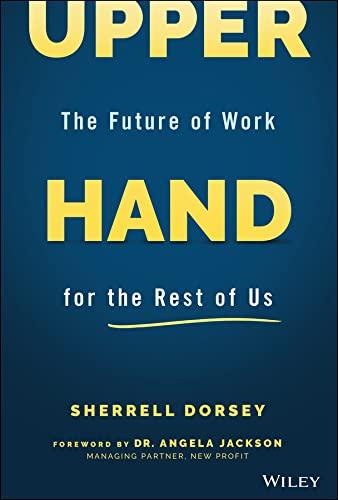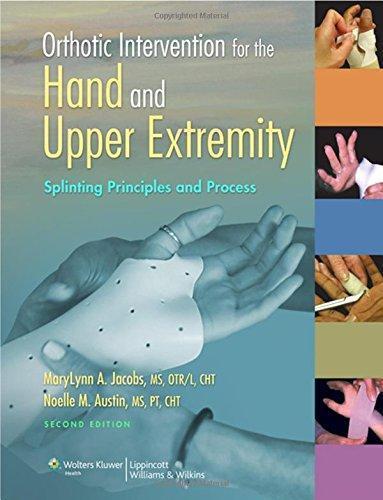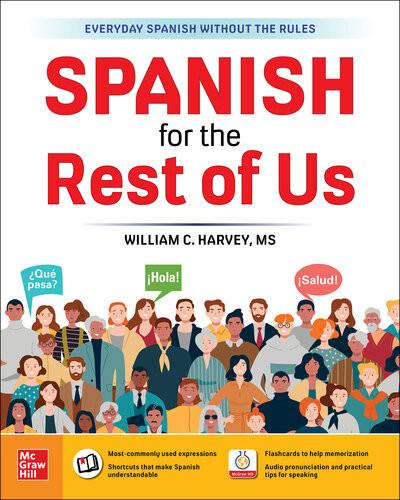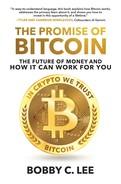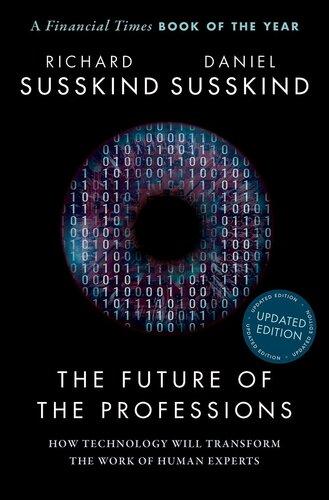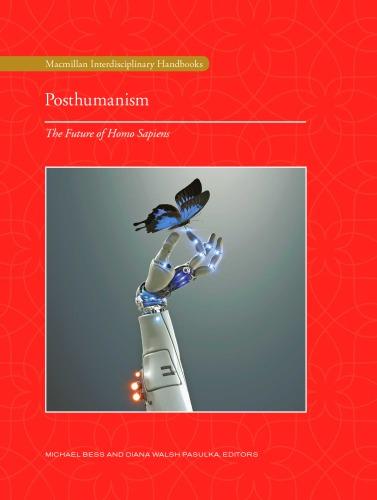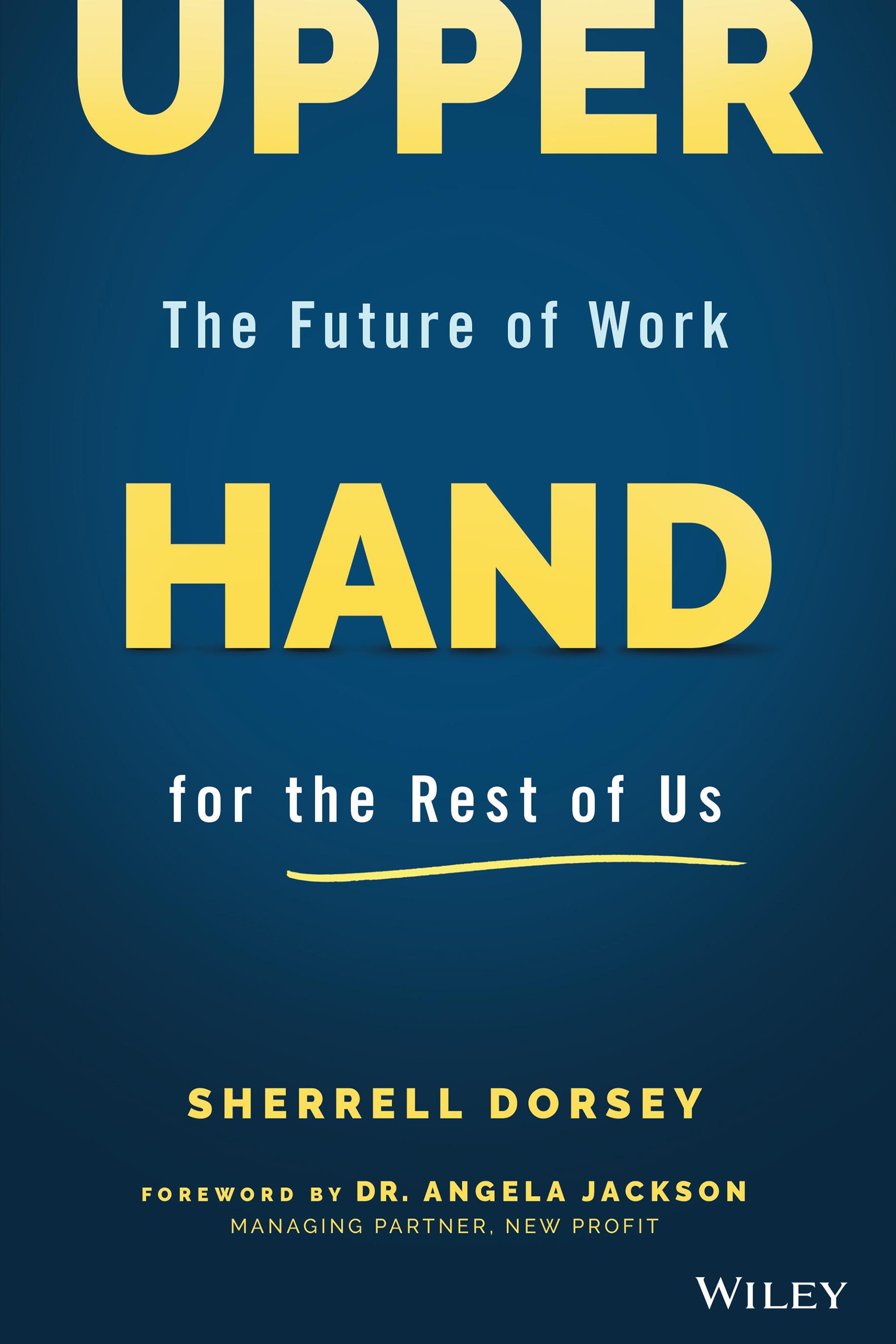HAND
SHERRELL DORSEY
FOREWORD BY
DR. ANGELA JACKSON MANAGING PARTNER, NEW PROFIT
Copyright © 2022 by John Wiley & Sons, Inc. All rights reserved.
Published by John Wiley & Sons, Inc., Hoboken, New Jersey.
Published simultaneously in Canada.
No part of this publication may be reproduced, stored in a retrieval system, or transmitted in any form or by any means, electronic, mechanical, photocopying, recording, scanning, or otherwise, except as permitted under Section 107 or 108 of the 1976 United States Copyright Act, without either the prior written permission of the Publisher, or authorization through payment of the appropriate per-copy fee to the Copyright Clearance Center, Inc., 222 Rosewood Drive, Danvers, MA 01923, (978) 750-8400, fax (978) 646-8600, or on the Web at www.copyright.com. Requests to the Publisher for permission should be addressed to the Permissions Department, John Wiley & Sons, Inc., 111 River Street, Hoboken, NJ 07030, (201) 748-6011, fax (201) 748-6008, or online at http://www.wiley.com/go/permissions.
Limit of Liability/Disclaimer of Warranty: While the publisher and authors have used their best efforts in preparing this work, they make no representations or warranties with respect to the accuracy or completeness of the contents of this work and specifically disclaim all warranties, including without limitation any implied warranties of merchantability or fitness for a particular purpose. No warranty may be created or extended by sales representatives, written sales materials or promotional statements for this work. The fact that an organization, website, or product is referred to in this work as a citation and/or potential source of further information does not mean that the publisher and authors endorse the information or services the organization, website, or product may provide or recommendations it may make. This work is sold with the understanding that the publisher is not engaged in rendering professional services. The advice and strategies contained herein may not be suitable for your situation. You should consult with a specialist where appropriate. Further, readers should be aware that websites listed in this work may have changed or disappeared between when this work was written and when it is read. Neither the publisher nor authors shall be liable for any loss of profit or any other commercial damages, including but not limited to special, incidental, consequential, or other damages.
For general information on our other products and services or for technical support, please contact our Customer Care Department within the United States at (800) 762-2974, outside the United States at (317) 572-3993 or fax (317) 572-4002.
Wiley also publishes its books in a variety of electronic formats. Some content that appears in print may not be available in electronic formats. For more information about Wiley products, visit our website at www.wiley.com.
Library of Congress Cataloging-in-Publication Data
Names: Dorsey, Sherrell, author.
Title: Upper hand : the future of work for the rest of us / Sherrell Dorsey.
Description: Hoboken, New Jersey : John Wiley & Sons, Inc., [2022]
Identifiers: LCCN 2021043229 (print) | LCCN 2021043230 (ebook) | ISBN 9781119839293 (cloth) | ISBN 9781119839316 (adobe pdf) | ISBN 9781119839309 (epub)
Subjects: LCSH: Minorities—Employment—United States. | African Americans—Employment. | Labor supply—Effect of technological innovations on—United States. | Manpower policy—United States. | United States—Economic conditions—21st century.
Classification: LCC HD8081.A5 D67 2022 (print) | LCC HD8081.A5 (ebook) | DDC 331.6—dc23
LC record available at https://lccn.loc.gov/2021043229
LC ebook record available at https://lccn.loc.gov/2021043230
Cover Design: Paul McCarthy
To Grandpa. Thank you for taking every risk and for showing up in the small and big ways that matter.
Introduction
Long before I ever sat down to write this book, the unfairness of how innovation and access are distributed among and favor certain communities over others haunted me.
After leaving my hometown of Seattle at 18, drifting across several mid-size and big cities over the years, visiting home was always deflating. First, there was the excitement of discovering an old-new city and its latest fanfare of restaurants and elevated shopping experiences, newly installed light rail systems, music venues, and galleries. But when I returned to my old neighborhoods or checked in with old friends and community folks, it was clear that they had not been benefactors of much of the city’s growth.
Through the years, in my work reporting on innovation (and lack thereof) in communities of color, I have been frequently reminded of the unfairness of progress. Personally, perhaps by way of proximity, I was able to access opportunities to take part in learning the language, skills, and social networks of technology throughout my childhood and teen years.
These small, yet significant, slivers of access empowered me to position myself for a future that would be largely shaped by discoveries and advances neither myself nor my family could have imagined were on the horizon. But those same resources that empowered me were not widely accessible to the vast majority of my peers, let alone the neighborhoods and schools that we were raised in. The evidence of this loss of potential talent and potential for greater social and economic mobility is much more than a by-product of the passing of time lending itself to growing up and moving out. By design, and in the vast majority of American cities boasting deep innovation centers and entrepreneurship environments, communities of color have been left behind.
“Essential” workers, a moniker we assigned to lower-wage, service workers at the height of the COVID-19 pandemic, are largely made up of Black and Latinx people, who remain overrepresented in these fields. As technology advances and machines and robots perform many of the tasks once executed by humans, we’re left with a series of questions about how we will ensure that those who are most economically vulnerable can gain access to and learn the skills of the future.
A few years ago, when I was living in Charlotte, North Carolina, I was asked to sit on a conference panel with the city’s workforce development leaders and other employers to discuss the future of work in Charlotte and beyond. At the time, I was building up BLKTECHCLT, a tech hub I co-founded with my partners and friends Enovia Bedford and Freda Hendley, that provided networking and training tools to the city’s rising Black tech entrepreneur community.
The panel and audience gathered in the basement of Grace A.M.E. Zion Church, a historic African Methodist Episcopal Zion church built in the early 1900s, set in the neighborhood
of what is today referred to as Uptown. The conference was hosted by the Charlotte chapter of the National Association for the Advancement of Colored People (NAACP).
Unlike the many fancy tech conferences and gatherings I’ve attended and reported on around the country over the years, this room wasn’t filled with high-profile CEOs, venture capitalists, or college graduates who’d spent years teaching machines how to think. No, these were regular folks. They were grandparents and caregivers, deacons and truck drivers. The crowd of older men and women were curious about the new world of work, some of them visibly nervous about what that new world meant for them and their families.
I’ll never forget my interaction with Ms. Smith (not her real name) that day. She sat in the front row, nodding softly as the conversation ran its course, shifting between keeping her eyes locked with mine and taking notes on the piece of paper she’d retrieved from the black purse that rested in her lap. Next to her sat a slim young man who you could tell was forced to spend his Saturday morning in a place he’d rather not.
During the question-and-answer period, Ms. Smith was the first to raise her hand. She shared with us that she had lived in Charlotte her entire life and had watched the city during its many transformations, noting how she had been here before Uptown was built, when folks would have never even thought about living in a boxy apartment in the center of the city. Ms. Smith, as she revealed, was raising her grandson, the young man sitting to her right. She had been raising him since he was a toddler and she was having a hard time feeling confident that she was able to guide him into a good life and career for himself. She came to the panel because she knew technology was important but knew very little about what that meant for folks like her, trying to find opportunities for her grandson.
The city boasted a youth employment program for teens, but there were very few options for young people to get access to paid technology internships. Local schools, depending on where you attended, had few resources for computer science programs. Overall, Ms. Smith didn’t have a clear guide on how to navigate the resources available in the city or whether they’d be the right kind of resources her grandson would need to get a job that paid well and would put him on the right path.
After years of toiling with ideas on how to discuss the future of work for communities of color navigating opportunities within tech, my encounter with Ms. Smith reminded me to look toward the baseline. The majority of the books on tech are written from what reads more like science fiction or are so heavily laden with inaccessible language and concepts that they offer very few solutions for the everyday person.
This book is for Ms. Smith and for those of you serving as the source of information and guidance for your families and communities.
Navigating the plethora of programs, research, statistics, and opportunities available across tech and tech-adjacent industries can be overwhelming. More important is deciding how to go about accessing these opportunities; determining the best strategies for what works requires time, knowledge, know-how, and networks. Upper Hand is dedicated to helping make this process and pathway easier.
Upper Hand is designed to provide and expand options to an innovation alternative—one where communities that have been historically excluded or left behind are part of the movement toward a future as technology furthers its influence and impact on society.
Upper Hand helps us think about how we strategically shape the next decade of our lives and our communities.
My hope is that you’ll find and use the information in this book to your advantage, to help you think critically and strategically about how you see yourself, your family, and your community navigating the new world of work.
This is the book I’d like for you to share with your family members, friends, houses of worship, community centers, mentor groups, and more. It is not designed to sit on your coffee table. You can pick it up each quarter to be used as a frequent resource and guide as you navigate your plans for shaping your career or educational pursuits. It is filled with case studies from people who, like me, came from communities that have been historically left behind in the innovation conversation.
The resources you’ll find here include definitions of terms and directories you can access and search on my website. The exercises I’ve pulled together are designed to spark conversations you can have with your family and community groups as you think about how to take advantage of the moment defining the future.
I can’t wait to see you all on the other side.
Soul of a City
“Are there even any Black people in Seattle?”
I’ve been answering this question over and over again through the decades, especially when I meet Black people who hail from very Black cities and are wondering exactly how Black folks have managed to build their lives, for generations, in some of the whitest places in America.
But that’s truly the story of our history, is it not? Whether we had “our folks” in the room or found them missing in action, migration across land and industry—particularly within places that used to be less than welcoming—Black people have not been deterred from finding or building doors to access.
My grandfather, Jerry Dorsey III, had mastered migration and placemaking by the time Seattle’s Black population began to swell in the 1960s. Born in 1933 in a colored hospital in Birmingham, Alabama, just like his sister Alberta and brother Willie, he learned early in life that the only difference between his current circumstances and opportunity was a decision to choose the path that had the potential to lead to something more.
Most Black folks left the Jim Crow South in search of better wages, better treatment in racially hostile environments, and upward economic and social mobility between the early 1900s and the 1970s. The Dorsey family was no exception. They made the transition from the bowels of the deep South, landing in Detroit, Michigan, when Grandpa was just shy of 13 years old.
My grandfather’s father, “Big Poppy,” found work at a tire factory in the bustling manufacturing industry that defined Detroit’s local economy. “Big Mommy” worked as a domestic, like most Black women during the era, cleaning white folks’ homes and doing their laundry.
Five years later, just shy of finishing high school, Grandpa was drafted into the Korean War, where he drove tanks and worked on switchboards. Like in the wars that preceded it, millions of Black men were asked to fight along with white men in a country in which they had little to no guarantee of civil rights or expected economic mobility. Grandpa could help serve his country, but he had not been granted the right to vote. Nor was he paid on par with his peers.
During the 1950s, most Black families were making on average just $1,800 annually, compared to $3,400 for white families. The stark economic racial wage gap has persisted up to this day.
By 1954, Grandpa was back living in his family’s Detroit home, deciding what he would do next with his life.
One afternoon, as he sat at the family dining table, poring over applications to college and even considering an art program, there was a knock at the door. A salesman from a local trade school program would upend Grandpa’s plans to “figure it out” and point him in the direction that would shape his life, and eventually my own. Grandpa only had to say yes and commit to two years of part-time training at the Detroit Radio Electronics Television School. And so he began a schedule of working during the day and attending classes at night. Around this time he’d settled down with his first wife, Anna, gotten married, and began his journey into fatherhood of two young children (my mom and uncle).
The work paid off. Just before completing his certificate at RETS, Grandpa had two job offers in hand. One was based in Jacksonville, Florida, and the other was from aircraft manufacturer Boeing. At the time, Boeing was in desperate need of workers, managing the boon of commercial and military contracts it had secured following the Korean War.
My grandfather was hired as one of many of the company’s electronic technician engineers, and one of a growing group of Black workers getting access to what was considered back then a high-paying job.
Boeing expanded its employee pool of Black workers during a time America was seeing significant changes in its workforce. The company hired its first African American worker, stenographer Florise Spearman, in 1942, and by the following year had employed over 300 Black workers—86 percent of whom were women. By the time my grandfather arrived at the company nearly two decades later, in 1960, that number had surged to over 1,600 Black workers.
It was jobs like these through companies like Boeing, IBM, General Motors, and other big industry players opening their gates through need, and some through affirmative action policy in the passing of the Civil Rights Act of 1964, that helped Black people enter the middle class and chart new trajectories out of low wages and into family-stabilizing jobs in manufacturing and engineering. Very few of these jobs required any education credential beyond a high school diploma or a certificate.
Prior to the Civil Rights Act, the service sector was overwhelmingly Black and brown. Black Americans, and slowly growing Latinx populations, were likely to hold jobs in janitorial services, secretarial support staff, or in lower-level machine work that made very little room for promotions or long-term economic stability.
Boeing’s move to hire Black workers in critical roles was thus monumental, particularly as large employers in Seattle like Nordstrom, Safeway, J.C. Penney, and the Bon Marché (before it was purchased by Macy’s) refused to hire Black workers at the time.
The wave of corporate America’s shifting attitude toward the employment of Black workers spelled change and opportunities for Black communities and became the bedrock on which my grandfather would thrive.
Ultimately, my grandfather chose Seattle for what he believed would be a calm transition. Riots were erupting across Florida as Black residents protested mistreatment and demanded the right to vote. My grandfather elected to skip out on the unrest and get to earning money to send home to his family.
So, in 1960, with his trade certificate in hand, he took off on the three-day journey to Seattle on the Greyhound bus, with one small suitcase and a few sandwiches he’d stuffed into a brown paper bag.
He arrived in Seattle a year before the iconic Space Needle was constructed, with just $30 in his pocket and no place to stay. He didn’t have any “people” or family members to help him get set up. He had no housing, no vehicle, or any idea whether the job in a mystery city would work out long term. But he no longer had a choice. He’d have to make it work.
The Young Men’s Christian Association (YMCA) on 23rd and East Olive Streets would be the place he’d call home for $10 a day. With limited resources, he ate only french fries, awaiting his first day of work and his first paycheck from Boeing, where he earned $2.38 an hour.
At the time of my grandfather’s arrival, Seattle’s Black population hovered at just over 16,000 people or just 2.4 percent of the total population, which was overwhelmingly white. A farming and manufacturing class of people ushered in a melting pot of migrants from Mexico, traveling from working in California agriculture, and Southeast Asian communities setting up businesses across the neighborhoods that
bordered downtown, and a trickling influx of eastern African immigrants.
My grandfather was an early settler in a slowly changing demographic of the city. His timing was perfect, entering an industry that would have gross implications for progress as the city increasingly became an industry leader in aircraft manufacturing and then eventually software development.
Boeing proved to be the launching pad my grandfather needed to enter into a middle-class life. With a paycheck or two under his belt, he’d been able to secure long-term housing and advance within his career. He spent seven years at the company before moving on to operate the cameras at the local television station KING-TV, where he remained for 25 years until his retirement.
There’s no way he could have predicted how much his life, and decision to move to a growing city sight unseen, would impact my world and an environment that would define the world’s trajectory by the time I came onto the scene in 1987.
Living Legacy
By the end of 1983, my mom had finished college and left Detroit to join my grandfather in Seattle. By that time, he’d married his new wife Rosella, had my aunt Rhonda from a previous marriage, and had become stepfather to my uncle Philip. When I came along, it was Grandpa who helped fill in the gaps. Single-parent life for my mom was facilitated by a village of family and friends. My grandfather, who lived a two- minute drive “up the hill” and had long since retired, was the designated helper of pickups and drop-offs. He was the one with the patience to help us with science products, cutting wood and metal in his garage to help me build a robotic arm
for my seventh-grade science project. His knack for technology and the mundanity of retirement made me and my cousin prime targets for his evangelizing of technology into our lives.
Grandpa was also the “Inspector Gadget” of our family, known for his affinity for gizmos, the latest television and VCR home equipment, and any other electronics he could wire into his home or garage workshop. Before home security tools became the norm, a keypad would let you enter the garage. A push of the doorbell triggered a camera upstairs to confirm guests before someone would travel downstairs to unlock the door.
He even set us up with our very first personal computers in the mid-1990s, convincing my mom to get an extra phone cord for dial-up internet. As the default designated babysitter for me and my cousins when school was out, our morning activities included accompanying Grandpa to Costco for groceries and an afternoon perched in front of his upstairs computer learning how to type via the Mavis Beacon CDROM program that circulated in the computer’s disk tower.
Mavis was a beloved annoyance in my grandfather’s house. She was our very first engagement of a Black person’s face on a software program. She looked more like an Ebony magazine cover model than a woman who spent her days forcing children to learn the quintessential home row on the computer keyboard. My cousin Otis and I would take turns going through each lesson while Grandpa watched a game of golf or built a new piece of furniture in his garage.
Grandpa normalized technology and our access to it in our everyday lives as a tool for learning, discovery, and a route to greater efficiency. Since he was retired and spent his days carting us around or running back and forth from the
Soul of a City 15
hardware store for any given random construction project he was managing at home, he had a lot of time to also curl up in front of a series of infomercials. This meant that every new CD-ROM available for the low price of $19.99 was ours to behold.
We had digital literature on the anatomy of the body with the ability to build 3D models of every body part we were curious about. Grandpa believed these tools would help us advance in our learning of science as well as technical skills. He bought us other software tools for increasing our reading comprehension, even making us sit for speed reading instruction. Grandpa was adamant about introducing techbased learning games and software programs that were supposed to turn us into instant geniuses. We toyed around with these for a while before eventually begging to take a break from the screen to go outside to play with the other kids who would begin to gather around my grandfather’s garage in the late afternoons to take advantage of the basketball hoop that hung over the garage and the miniature putting green he’d built into the yard (that to this day he has used maybe once).
What we were learning and discovering at Grandpa’s was supplemented at home through my mom’s intentional collection of an analog library of books and literature written by Black authors and researchers. After my dates with Mavis Beacon, my mom encouraged my relationship with Maya Angelou, Mona Lake Jones, Toni Morrison, Jawanza Kunjufu, Walter Dean Meyers, and other Black literary voices.
As the digital age became more accessible, and our collection of encyclopedias became obsolete, she purchased CD-ROMs like Microsoft’s 1999 Encarta Africana one of the early digital encyclopedias that used text, images, and
storytelling to present narratives on Black Americans and African culture. For personal exposure, and for research for school projects, having access to a living, digital encyclopedia was my early experience in doing research online.
My mom was certainly no technologist, but she adapted to the environment as technology at work transformed and she prioritized its usage at home. She worked in leadership roles across social service agencies, running the office of child welfare before transitioning to nonprofit management and foster care advocacy work, where keeping up digitally was a requirement to staying competitive in the market. In addition to ensuring that we replaced at-home equipment once new models came out, Mom frequently purchased gadgets like Game Boys and Walkmans, and upgraded the home sound systems for playing Anita Baker for Saturday morning cleaning sessions. In 1996, she even owned a Palm Pilot—an early rendition of the tablets we use today.
She stressed the importance of possibility, and she did this well with how she shaped our “village.” Growing up in a middle-class Black family with others who had migrated meant that our parents were keen on exposing us to “Blackness” outside of Seattle. Representing a very small percentage of the total population meant that we had all grown accustomed to being one of very few Black or brown students in a classroom. For us, underrepresentation, outside of our immediate homes and circles, was the norm.
On Saturdays, after we cleaned the house and ate breakfast, Mom transported me to the Central Area, a predominantly Black community, for a few hours of Black history and entrepreneurship learning at the Delaney Learning Center. We met at the Central Area Motivation Program (CAMP) space on Martin Luther King Jr. and Jackson Streets—a space that got
